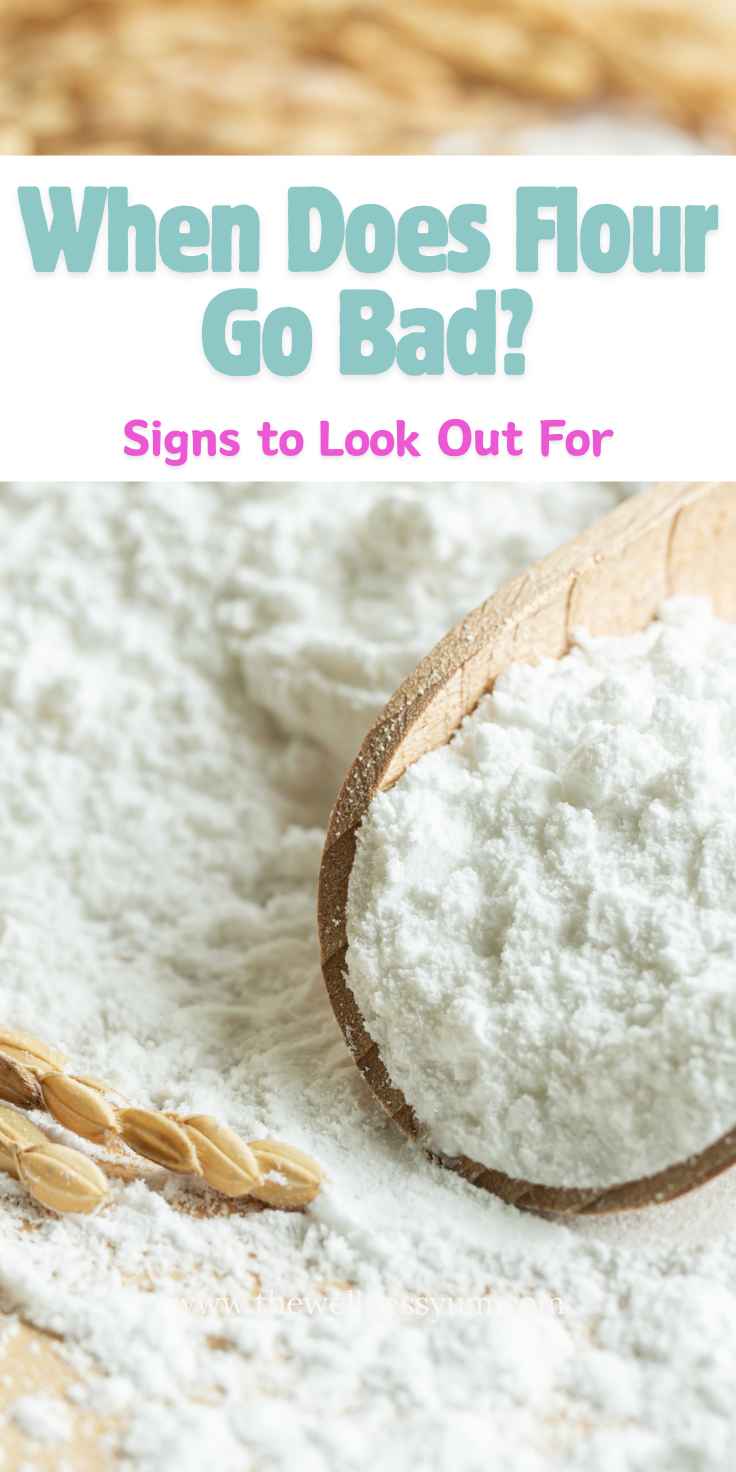Does flour go bad? Yes, it can! Learn how to spot the signs of expired flour and keep your pantry fresh and safe.
Flour is a pantry staple that is prepared by powdering grains or other substances. Although flour is historically made from wheat, it is now available in a variety of forms, including coconut, almond, and gluten-free variants.
Many people store flour in their cupboards for a long time, even after it has passed its expiry date.

As a result, you may be wondering how long flour can be stored safely.
This article discusses whether flour spoils, how to store it properly, and the dangers of consuming outdated flour.
Does Flour Go Bad? How To Decide
Jump to:
What Is the Flour Shelf Life?
The shelf life of flour, or how long it lasts before spoiling, is influenced by a number of variables.
At room temperature, most flours last 3–8 months, frequently far over their expiry date. However, the shelf life of flour varies depending on the kind, components, and how it is stored.
Types of Flour
Flour is often classified according to the degree of processing, which impacts its shelf life. The origin of the component, such as wheat or arrowroot, has an effect as well.
Because of how it is prepared, white all-purpose flour, for example, keeps fresher longer than whole-wheat flour.
White flour is highly refined, which means the bran and germ have been removed from the grain, leaving just the starchy endosperm. Whole-wheat flour, on the other hand, comprises all three sections of the grain: bran, germ, and endosperm.
Because the bran and germ are high in oils, whole-wheat products are more prone to spoiling. When lipids are exposed to light, moisture, or air, they degrade, resulting in an unpleasant taste and odour.
Gluten-free options such as almond or coconut flour are generally heavy in oil, making them more susceptible to rancidity than white flour.
Furthermore, owing to its high moisture content, gluten-free all-purpose flour, which commonly contains various nut- or root-based flours, may be more susceptible to mould.
read also: Health Benefits of Fenugreek
Methods of Storage
Furthermore, the shelf life of flour is determined by how it is stored.
Flour is shelf-stable, according to the United States Department of Agriculture (USDA). This suggests it's safe to keep it at room temperature.
It should, however, be stored in an airtight container in a cold, dry location to maintain its freshness. Its shelf life may be extended by refrigerating or freezing it.
All-purpose flour, for example, lasts 6–8 months on the shelf but may last up to a year if refrigerated and two years if frozen.
If you're going to store your flour in the fridge, keep it away from moisture and water to avoid mould. It's better to do this in an airtight container like a plastic bag or a food bin.
It's important to remember to bring refrigerated or frozen flour to room temperature before using it. This will keep lumps at bay.
read also: Health Benefits of Oregano
The shelf life of flour is determined by the kind of flour used as well as the storage methods used. Due to its reduced fat content, white flour lasts longer than whole-wheat and alternative variants.
How to Tell if Your Flour Is Bad
Expiration dates, often known as best-by dates, are placed on the bag of most packaged flours to indicate how long they'll keep fresh.
These labels, on the other hand, aren't required and don't indicate safety. As a result, even if the best-by date has passed, your flour may still be fine to consume.
The easiest method to tell whether your flour is safe to eat is to smell it. While new flour has a neutral odour, stale, musty, or practically sour flour has a distinct odour. It might also seem discolored.
Large clumps of mould may emerge if your flour has come into touch with water or moisture. In this situation, you should toss the whole bag out right away.
When it comes to preventing food waste, think of new methods to utilise old flour that is close to or beyond its expiry date. It's great for making non-food products like playdough and homemade glue, in addition to baked delicacies like breads and cakes.
Summary
It's easiest to detect whether flour has gone bad by smelling it. You should discard it if it smells bad or displays symptoms of mould.





Leave a Reply